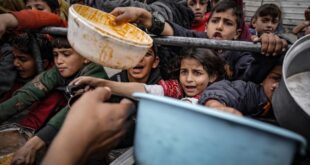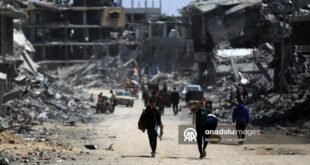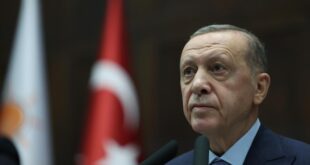A vast treasure trove of photos of the Balkans, taken more than a century ago as part of a rich banker’s project, has been lovingly preserved in a Paris museum.
Three young boys are standing in the muddy road and smiling for a photo. One is wearing pants, sweater and jacket, the other has an adult-style suit and the third wears traditional clothing. One is wearing a hat, and two other, fezzes.
Most of the clothes are grey, blue and white, except for the red fezzes and part of the traditional garb. It is not known how old the boys are.
But we do know that the photo was taken in October 1912, in Visegrad, eastern Bosnia and Herzegovina and, according to description, shows: “Three young people on the road, the two on the right with Muslim fez, the third on the left with Serbian hat”.
It is one of 72,000 photos shot as part of a huge project called “Les Archives de la Planète” [The Archives of the Planet], conducted from 1908 until 1931.
It was sponsored by a French banker Albert Kahn, who made a fortune during the 19th century. Since 1912, the project was done in cooperation with the famous French geographer Jean Brunhes, known best for his book, La géographie humaine [Human Geography].
Twelve photographers in total visited 50 countries, from Brazil, Scandinavia to the Middle East and West Africa, for the project.
Reproductions of the photos are on display in the Albert Kahn Museum in Paris, preserving the memory of this grand project. The photos are also available online, on the museum website.
Magali Melandri, assistant director of collections, explains that during his travels, mostly for business, Kahn “witnessed the big transformation and evolution of culture throughout the world”.
“He had this feeling that things could disappear, that different aspects of cultures could disappear and that it was important to register the state of different states of the world between the end of 19th and beginning of the 20th century,” Melandri told BIRN.
“The idea of Albert Kahn and Jean Brunhes was to register different aspects of cultures before some of them disappeared.”
During 1912 and 1913, part of the team, led by Brunhes, visited the Balkans, photographing various communities across Bosnia and Herzegovina, Serbia, Montenegro, Kosovo, Albania, Turkey and Greece.
Some 110 years after first “Archives of the Planet” mission visited the Balkans, Melandri explains: “One of the goals of the mission was also to bear witness to what remains of the culture and all of these different type of cultures, despite all the historical events that were happening at that time.
“And to understand what was still going on and was what was changing, because of the region at that time was very upset by different historical events and wars,” she told BIRN.
Snapshot of First Balkan War
Jean Brunhes and photographer Auguste Leon first came to the Balkans in October 1912 and their first stop was Bosnia.
This was the time of the First Balkan War, between the Balkan League – Serbia, Montenegro, Bulgaria and Greece – and the Ottoman Empire.
Serge Fouchard, a museum documentarist who works specifically on photos from Balkan countries, explains: “When they came back to France Brunhes did a series of conferences and lectures at the College de France; the very first conference was about the beginning of the war and the subject was Bosnia.”
“Brunhes displayed screen photographs of his mission during the lectures, which was very new,” Fouchard told BIRN.
The next mission followed in spring 1913, to Serbia. Next, they visited nowadays North Macedonia, Kosovo, Macedonia again, Greece and then again Macedonia. From there, they went back to Greece and finished this part of the mission in June 1913 in Turkey.
“Again, Auguste Leon was the photographer, but Brunhes was photographer too, so sometimes it’s difficult to tell who made the photograph, either Leon or Jean,” Fouchard said.
The mission went to Greece again in October and from there to Albania and Montenegro. Back home in France, Brunhes organized a conference on Albania on December 20, 1913. Text and images from the conference are also part of the permanent collection in the museum.
Although many photos were made of the war, Fouchard explains that since Brunhes, as a geographer, specialized in human geography, and in “how humans interact with their environment”, it is interesting that “war is not the main topic in the photography that were done at the time”.
“It was not the main goal of the subject of the photography, but anyway, we can see some aspects of the destruction of that time in these photographs,” Fouchard said.
What can be seen on labels of photos available online is that the Bosniaks were sometimes called “Turks”, due to their Muslim religion and the stereotypes in force in the early 20th century.
Those stereotypes were revived during 1990s during the Yugoslav wars, when the word “Turks” was often used by Bosnian Serbs as a derogatory term for Bosnia’s Bosniaks.
Convicted Bosnian Serb Army general Ratko Mladic’s speech used the phrase when his forces entered Srebrenica, eastern Bosnia, in July 1995, before committing genocide there.
Melandri explains that the labels in the online database are from the original inventories or, in some cases, from the photographers themselves, but that the museum is aware of the need of “more contemporary approach” to them. “Identities have changed”, as she told BIRN.
“That is why it is important to have feedback, thanks to this now open database and online,” she added.
Some of the first-ever colour photos
The photos in “The Archives of the Planet” that photographer Aguste Leon and other photographers made were produced using the autochrome technique, which was one of the first colour photo techniques. This means the Balkan photos of “The Archives of the Planet” are among the rare colour photos from the beginning of the 20th century.
Melandri explains that the plates were kept carefully for decades before the museum opened in 1990 and that even today, what is available to be seen are only reproductions. The original plates are too delicate to be put on display.
Unlike nowadays, when these photos were made, they were not widely shown. Melandri explains that they had two main usages and that actually only a few people saw them at the time.
“The project was also a political project for Albert Kahn and the way they were displayed was very specific. Kahn only invited high society, from France and Europe – international high society in political, economical, religious terms, the aristocracy, the important people at that time, in order to obtain an influence on them – and to open to their eyes the diversity of the world and its importance.”
Brunhes also used these materials at different conferences or for his teaching at the College de France, or at the Sorbonne.
One of the high-society members that saw part of the project first hand was Yugoslavia’s King Aleksandar I. In December 1919, he visited Kahn’s residence, today’s Museum location, and was shown the photos.
On that occasion a video was made of Aleksandar together with Kahn, which is one of the rare surviving film footages of the Yugoslav monarch.
Fouchard says this was a very small visit, just the king – then crown prince – and a few other people.
“The topics were the city of Athens in Greece, Serbia, a selection of the pictures of Serbia. The end of the projection was dedicated to another residence of Kahn’s in the south of France at Cap Martin, next to the Italian border, and end of the projection was the sunset,” Fouchard told BIRN.
The project ended after Kahn went bankrupt during the Great Depression.
 Eurasia Press & News
Eurasia Press & News




